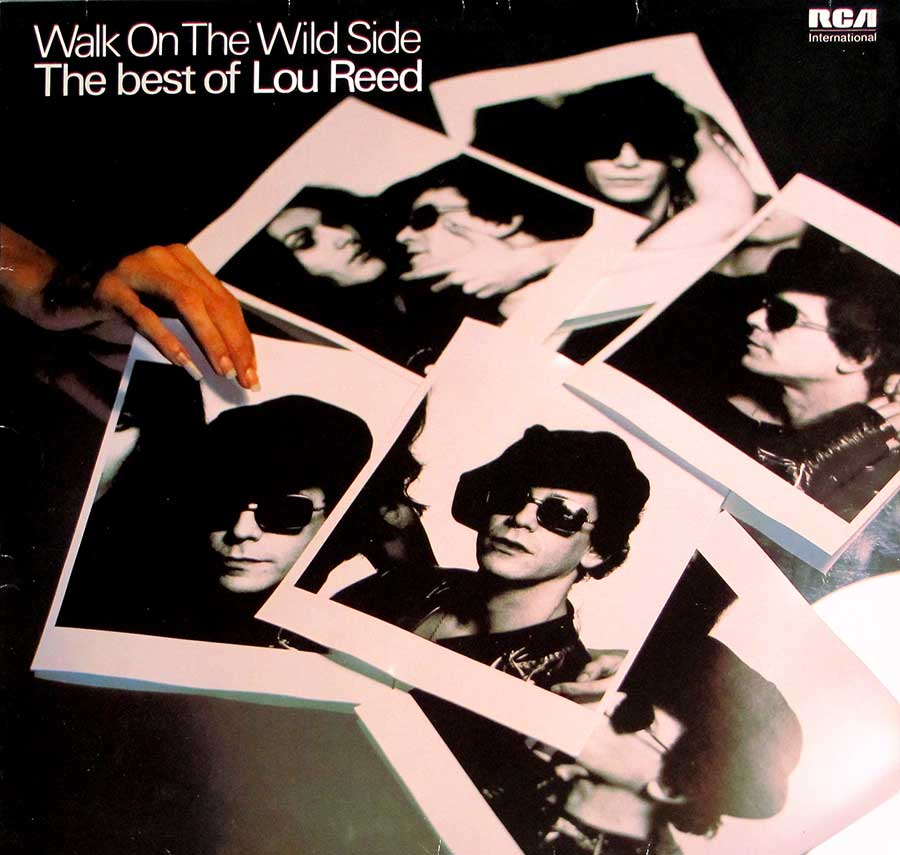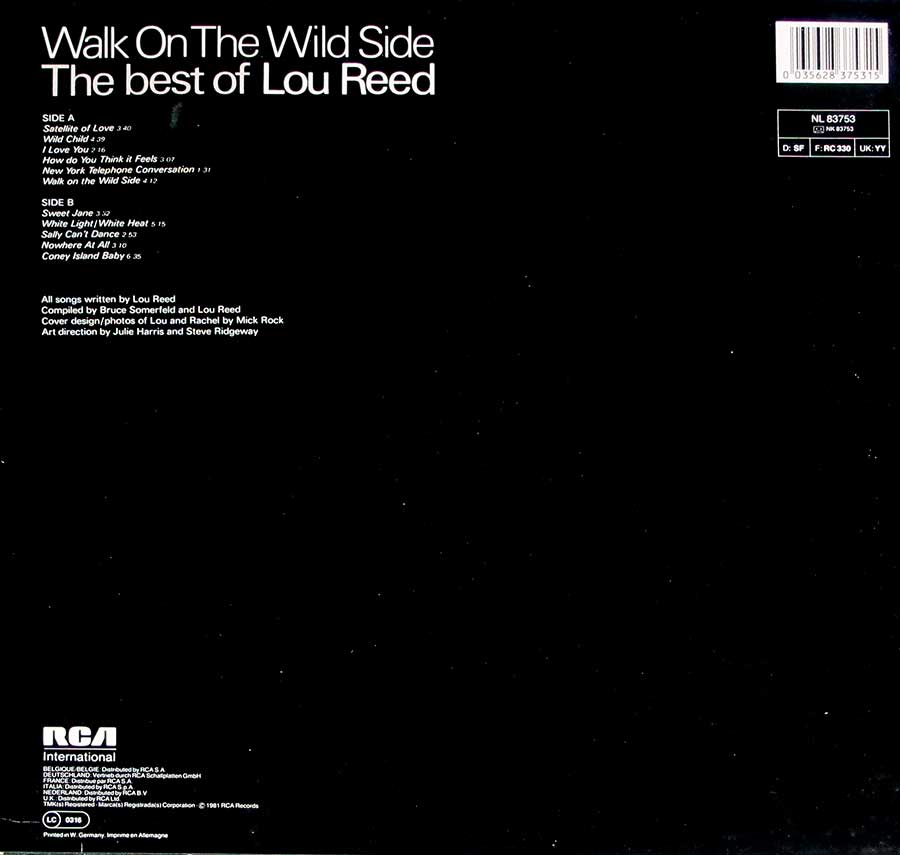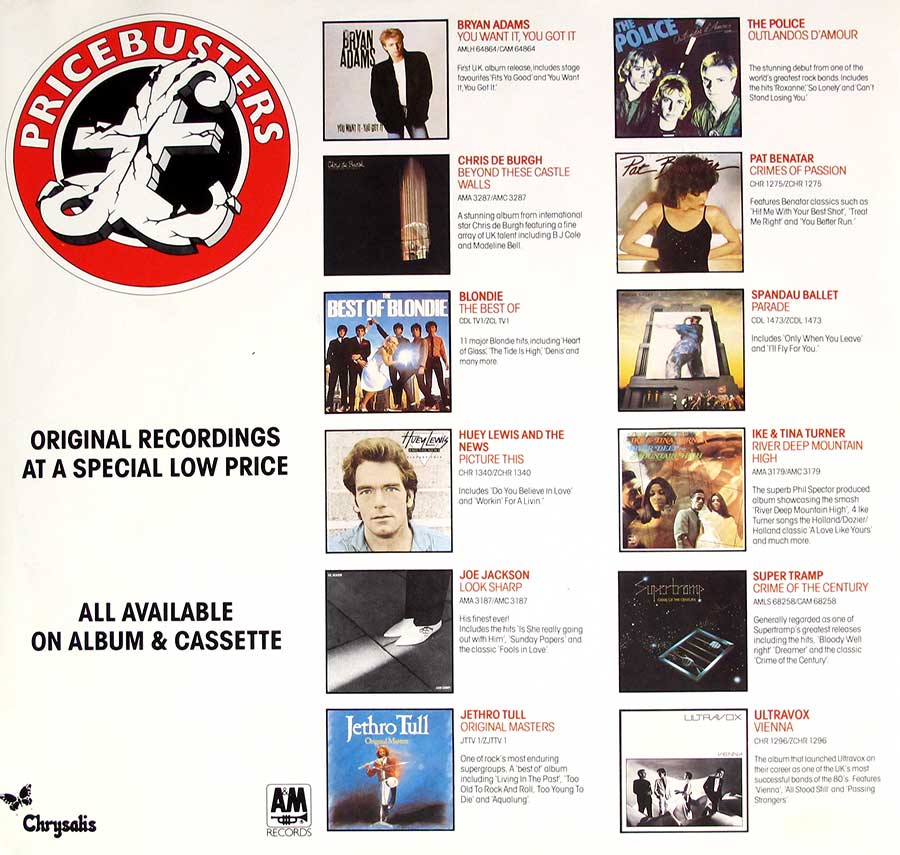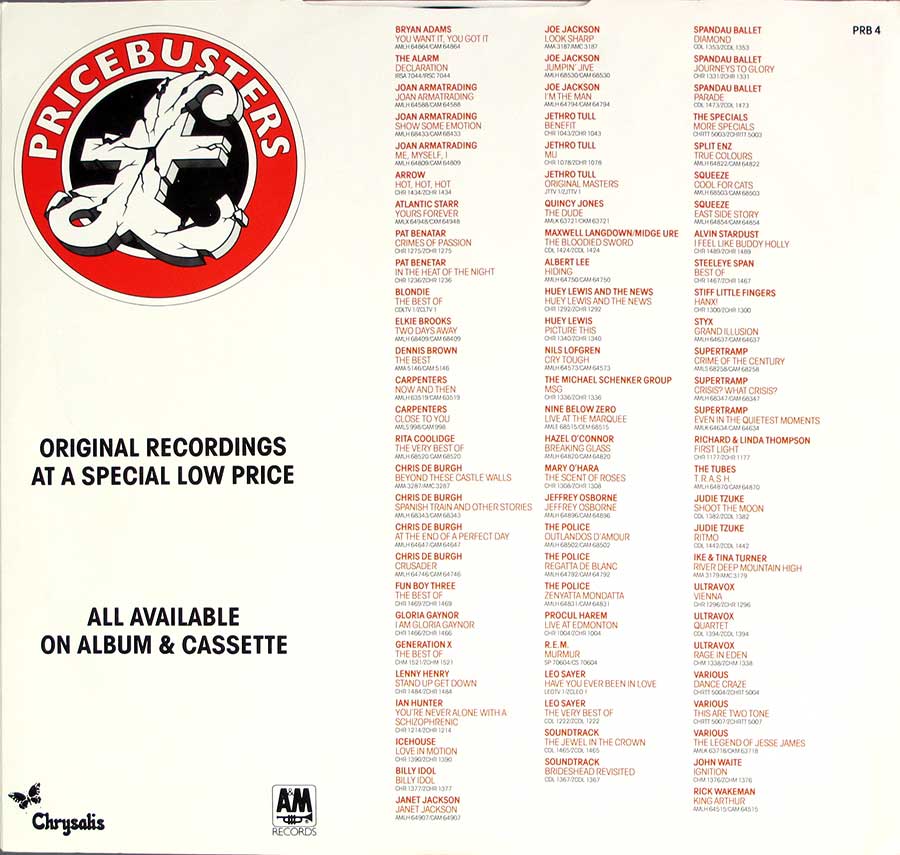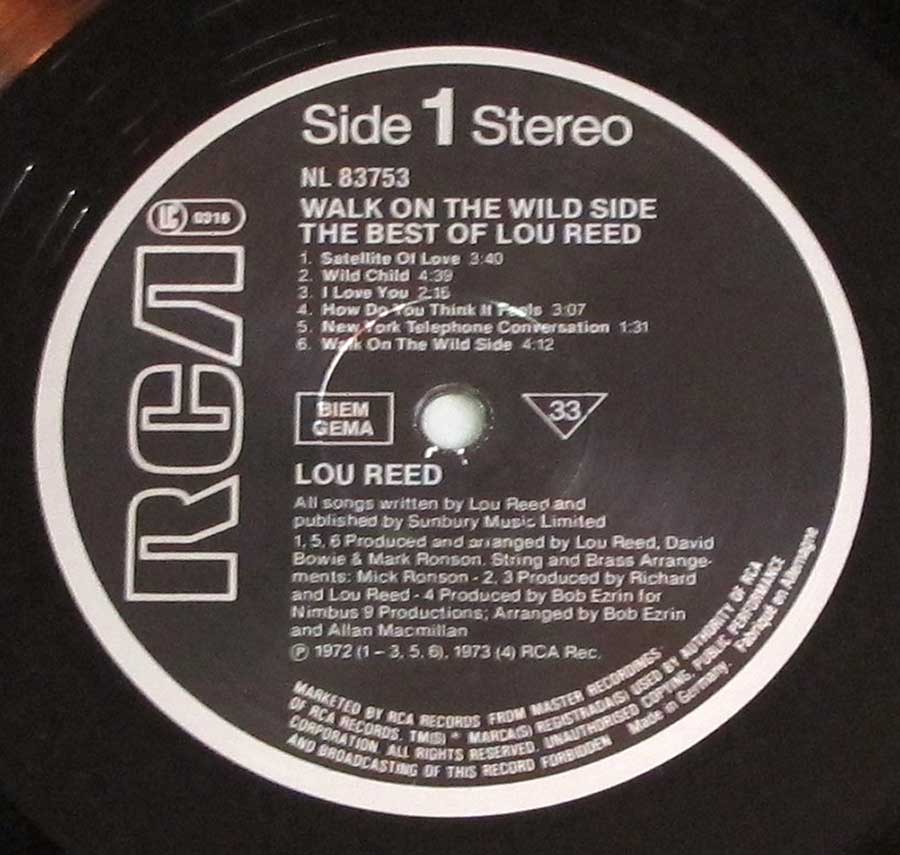Album Description:
In the world of vinyl record collecting, few names shine as brightly as Lou Reed, the iconic figurehead of rock and roll and a founding member of The Velvet Underground. Today, we delve into the world of "Walk on the Wild Side: The Best of Lou Reed", a 12" LP vinyl album that encapsulates the essence of this musical legend's solo career.
The Making of the Album
Released in 1977 by RCA Records, "Walk on the Wild Side: The Best of Lou Reed" marked a pivotal moment in Lou Reed's post-Velvet Underground solo career. After parting ways with RCA Records following his album "Coney Island Baby", this compilation served as a retrospective of his work up until that point.
Lou Reed, along with collaborators like David Bowie, Mark Ronson, and Bob Ezrin, took the helm as producers, ensuring that every track on this album was a true representation of Reed's artistic evolution.
Behind the Vinyl
The vinyl album "Walk on the Wild Side: The Best of Lou Reed" is more than just a collection of songs; it's a journey through Reed's sonic exploration. This LP comes complete with its original company inner sleeve, adding to its collectible charm.
The album art direction, a crucial aspect of any vinyl record, was masterminded by Julie Harris and Steve Ridgeway, while the cover design was a collaborative effort between Lou Reed himself and the talented photographer Mick Rock. The album's cover art is a glimpse into Reed's enigmatic personality, capturing the essence of the music within.
The Tracklist
Now, let's explore the soul-stirring tracks that make up "Walk on the Wild Side: The Best of Lou Reed":
1. "Satellite Of Love" - This song opens the album with its soothing yet thought-provoking lyrics and Reed's distinctive vocals.
2. "Wild Child" - A rebellious anthem that showcases Reed's ability to blend rock and poetry seamlessly.
3."I Love You" - A brief yet poignant moment that tugs at the heartstrings.
4. "How Do You Think It Feels" - A reflection on life's complexities, delivered with Reed's trademark wit.
5. "New York Telephone Conversation" - A short but sweet glimpse into Reed's lyrical genius.
6. "Walk on the Wild Side" - The title track, a timeless classic that needs no introduction.
7. "Sweet Jane" (live) - A live rendition of one of Reed's most beloved Velvet Underground songs.
8. "White Light/White Heat" (live) - Another live gem that captures the raw energy of Reed's performances.
9. "Sally Can't Dance" - A playful and catchy tune that showcases Reed's versatility.
10. "Nowhere At All" - A song that takes you on a journey through Reed's introspective side.
11. "Coney Island Baby" - The album concludes with this epic track, a testament to Reed's storytelling prowess.
A Collector's Must-Have
"Walk on the Wild Side: The Best of Lou Reed" is not just an album; it's a piece of music history. For collectors of vinyl records from the 1960s through the early 1990s
